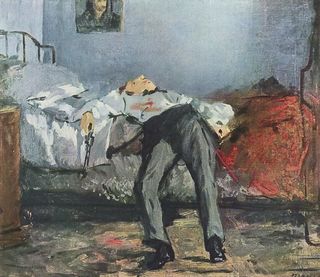Suicide
Suicide is a Bigger Problem than Murder
Suicides are steadily increasing in the U.S.
Posted August 6, 2018

Did you know that suicides greatly outnumber murders in the U.S.? in fact, the ratio is approximately three suicides for every murder. If you did not know this, it is not surprising, considering the amount of news media attention given to murder relative to suicide in our society.
The topic of suicide rarely makes the news headlines unless it involves the death of someone famous such as celebrity chef and storyteller Anthony Bourdain, fashion designer Kate Spade, rock vocalist Chris Cornell or comedian Robin Williams.
In contrast, murder is a ubiquitous topic in the news and entertainment media—that is, you cannot avoid it. Unknown by most Americans, however, is the fact that the rate of suicide is sharply on the rise and has been for more than a decade.
Almost entirely absent from public discussion is the fact that the steady rise in suicide has been accompanied by a steady decline in homicide in the U.S. These unusual and conflicting patterns have co-existed for a number of years
Incredibly, there are now nearly three suicides for every murder committed in the U.S. Suicides also outnumber deaths in motor vehicle accidents. To put it in perspective, there are currently about 17,000 murders, 38,000 auto fatalities and 45,000 suicides in the U.S. annually.
The federal statistics also reveal that suicide demographic patterns are changing in the U.S. Suicide is no longer concentrated among isolated, elderly Americans and, to a lesser extent, troubled teenagers. It has been dramatically on the rise among middle-aged Americans. There has also been a dramatic increase in suicides among veterans of the Iraq and Afghanistan wars.
As reported in The New York Times, suicide rates among middle-aged Americans have risen sharply in the past decade, prompting concern that a “generation of baby boomers who have faced years of economic worry and easy access to prescription painkillers may be particularly vulnerable to self-inflicted harm” (1).
Dr. Ileana Arias, Principal Deputy Director of the Centers for Disease Control and Prevention (CDC) told The New York Times that the rising suicide rate among middle-aged Americans might be due to a series of life and financial circumstances that are unique to the baby boomer generation. Men and women in that age group are often coping with the stress of caring for aging parents while still providing financial and emotional support to adult children.
The rise in suicides likely stems in part from the economic downturn over the past decade. Historically, suicide rates rise during times of financial stress and economic setbacks. “The increase does coincide with a decrease in financial standing for a lot of families over the same time period,” Dr. Ileana Arias told The New York Times.
Although most suicides are still committed using firearms, officials said there was a marked increase in poisoning deaths, which include intentional overdoses of prescription drugs, and hangings. Poisoning deaths were up 24 percent over all during the last ten years and hangings were up 81 percent.
Unfortunately, we do not like to talk about suicide in our culture. It makes us very nervous. Talk of suicide triggers unpleasant emotions such as fear, uncertainty, shame and guilt for many people.
On the other hand, we love to talk about murder because it allows us to be judgmental, feel morally superior, and point our fingers at the guilty party.
There is a tremendous stigma attached to suicide in the U.S. that I believe is linked to the Protestant ethic and its emphasis on individual choice and responsibility. The Protestant ethic would suggest that if you commit suicide you alone are culpable—that is, you made a choice to take your own life. Society is relieved of any moral responsibility for your actions.
The Protestant ethic that lies at the heart of American culture can help to explain why politicians, religious leaders, and law enforcement authorities are not discussing the current suicide epidemic. The Protestant ethic dictates that society needs to do nothing about suicide as a social problem. As a result, suicide is unfortunately not on the public agenda.
It is time to remove the stigma from suicide and have an honest and open public discussion about this serious social issue. We must stop hiding our heads in the sand and begin to discuss real strategies and solutions to the growing suicide problem in the U.S.
If you or someone you know needs help, visit the National Suicide Prevention Lifeline or call 1-800-273-TALK (8255).
Dr. Scott Bonn is a criminologist, professor, author and TV commentator. Follow him @DocBonn on Twitter and visit his website docbonn.com
References
(1) Parker-Pope, Tara. “Suicide Rates Rise Sharply in U.S.” The New York Times, May 2, 2013.




